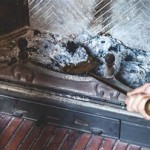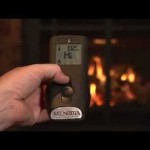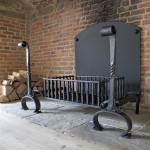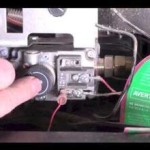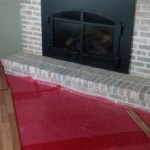```html
Gas Fireplace Freestanding: A Comprehensive Guide
Freestanding gas fireplaces represent a popular heating and aesthetic addition to homes, offering a combination of convenience, efficiency, and visual appeal. Unlike traditional wood-burning fireplaces that require significant construction and maintenance, freestanding gas models provide a relatively simple installation process and cleaner operation. This article delves into the key aspects of freestanding gas fireplaces, covering their types, benefits, installation considerations, maintenance requirements, and safety precautions.
Understanding Freestanding Gas Fireplace Types
Freestanding gas fireplaces are not a one-size-fits-all solution. The market offers a variety of models, each designed with specific features and functionalities to cater to diverse needs and preferences. Understanding these types is crucial for selecting the optimal fireplace for a particular space.
Direct Vent Fireplaces: Direct vent models are arguably the most popular and efficient type of freestanding gas fireplaces. They are sealed combustion systems, meaning they draw combustion air from outside the house and vent exhaust gases directly to the exterior through a coaxial pipe. This design minimizes the risk of indoor air pollution and maximizes heating efficiency. The sealed system also prevents drafts and helps maintain consistent indoor air quality. Direct vent fireplaces are often preferred for their safety and performance characteristics.
Vent-Free (Ventless) Fireplaces: As the name suggests, vent-free gas fireplaces do not require a chimney or vent. They utilize room air for combustion and release the exhaust gases directly into the living space. While vent-free models offer flexibility in terms of placement due to the absence of venting requirements, they are subject to stricter regulations and safety considerations. These fireplaces are equipped with oxygen depletion sensors (ODS) that shut off the gas supply if the oxygen level in the room drops below a safe threshold. However, it's crucial to ensure adequate ventilation when operating a vent-free fireplace to prevent the buildup of carbon monoxide and other combustion byproducts. Many jurisdictions have restrictions or outright bans on vent-free fireplaces, so it's essential to verify local building codes before purchasing one.
B-Vent Fireplaces: B-vent fireplaces, also known as natural vent fireplaces, require a vertical vent that runs to the roof. They draw combustion air from the room and vent exhaust gases through the B-vent. B-vent fireplaces are less efficient than direct vent models because they rely on natural convection to draw exhaust gases up the vent. This can lead to heat loss and potentially draft issues. While they are a more traditional option compared to direct vent fireplaces, they are less commonly installed in new construction due to their efficiency limitations.
Insert Fireplaces (Adaptable to Freestanding): While technically designed to be inserted into existing fireplaces, some insert models can be adapted into freestanding units with the addition of a stand or legs and appropriate venting. These offer a compromise between the retrofit capabilities of an insert and the independent nature of a freestanding unit. The venting requirements would follow the same guidelines as their direct vent or B-vent counterparts, depending on the specific model.
Advantages of Choosing a Freestanding Gas Fireplace
Freestanding gas fireplaces offer a multitude of advantages over traditional wood-burning fireplaces and other heating alternatives. These benefits contribute to their increasing popularity among homeowners.
Ease of Installation: Compared to building a traditional fireplace or installing a complicated insert, freestanding gas fireplaces are relatively easy to install. Direct vent models require running a vent pipe to the exterior, which can be achieved through a wall or roof. Vent-free models, where permitted, are even simpler to install, requiring only a gas line connection. This straightforward installation process translates to lower installation costs and less disruption to the home.
Energy Efficiency: Gas fireplaces, particularly direct vent models, are highly energy-efficient. They convert a high percentage of the gas consumed into usable heat, reducing energy bills and minimizing environmental impact. The sealed combustion system in direct vent fireplaces prevents heat loss through the chimney, further enhancing efficiency. Furthermore, many models include adjustable thermostat settings and programmable timers, allowing for precise temperature control and energy conservation.
Cleanliness and Convenience: Unlike wood-burning fireplaces, gas fireplaces eliminate the hassles of storing firewood, building fires, and cleaning up ashes. They provide instant heat with the flip of a switch or the press of a button. This convenience makes them an attractive heating option for busy homeowners. Gas fireplaces also produce no smoke, soot, or particulate matter, contributing to cleaner indoor air quality and reducing the risk of chimney fires.
Aesthetic Appeal: Freestanding gas fireplaces are available in a wide range of styles, finishes, and sizes to complement any décor. They can serve as a focal point in a room, adding warmth and ambiance. Many models feature realistic-looking artificial logs and flames, creating a cozy and inviting atmosphere. From traditional designs to contemporary styles, there's a freestanding gas fireplace to suit every taste.
Zone Heating: Gas fireplaces offer the ability to provide zoned heating, meaning that one can directly heat only the rooms that are in use rather than the whole house. This can be significantly more efficient than running a central heating system, especially when only a small portion of the home needs to be warmed.
Key Considerations for Installation and Safety
While freestanding gas fireplaces offer numerous advantages, proper installation and adherence to safety guidelines are paramount to ensure safe and efficient operation. Careful planning and professional installation are crucial for maximizing the benefits and minimizing potential risks.
Professional Installation: It is highly recommended to have a qualified and licensed gas technician install a freestanding gas fireplace. A professional will ensure that the gas line is properly connected, the venting system is correctly installed, and the fireplace is operating safely and efficiently. Incorrect installation can lead to gas leaks, carbon monoxide poisoning, and fire hazards. A licensed technician will also be familiar with local building codes and regulations.
Venting Requirements: The venting requirements for freestanding gas fireplaces vary depending on the type of model. Direct vent fireplaces require a coaxial pipe that vents both intake and exhaust directly to the outside. B-vent fireplaces require a traditional chimney or vent pipe that runs to the roof. Vent-free fireplaces, where permitted, do not require venting but require careful consideration of indoor air quality. It's crucial to follow the manufacturer's instructions and local building codes when installing the venting system to ensure proper ventilation and prevent carbon monoxide buildup.
Gas Line Connection: Connecting a freestanding gas fireplace to the gas line requires careful attention to detail. A licensed gas technician should perform the connection to ensure that it is leak-proof and meets all safety standards. The gas line should be properly sized to provide adequate gas pressure to the fireplace. It's also important to install a shut-off valve near the fireplace for emergency situations.
Clearances and Combustible Materials: Freestanding gas fireplaces generate heat, so it's essential to maintain adequate clearances between the fireplace and combustible materials such as furniture, curtains, and walls. The manufacturer's instructions will specify the minimum clearances required. Failure to maintain proper clearances can lead to a fire hazard.
Carbon Monoxide Detectors: Installing carbon monoxide detectors in the home is crucial, especially when operating a gas fireplace. Carbon monoxide is a colorless and odorless gas that can be deadly. Carbon monoxide detectors will alert occupants to the presence of the gas, allowing them to evacuate the premises and seek medical attention. It is recommended to install carbon monoxide detectors on every level of the home and near sleeping areas.
Regular Maintenance: Regular maintenance is essential for ensuring the safe and efficient operation of a freestanding gas fireplace. This includes inspecting the venting system for obstructions, cleaning the burner assembly, and checking the gas line connections for leaks. It's also important to have the fireplace professionally inspected and serviced annually by a qualified technician.
Choosing the right freestanding gas fireplace involves careful consideration of factors like room size, venting options, heating needs, and aesthetic preferences. By understanding the different types of fireplaces, their advantages, and the key considerations for installation and safety, one can make an informed decision that will provide years of warmth, comfort, and enjoyment.
```
Freestanding Gas Fireplaces Fergus Fireplace

Freestanding Gas Fireplaces Fergus Fireplace

Escea Dfs730 Freestanding Gas Fireplace Climatise
Dru Freestanding Gas Fires And Stoves

Free Standing Gas Fireplace Stoves For 30 On Now

Madrona Contemporary Freestanding Gas Fireplace Patio Palace

Majestic 30 Inch Ruby Freestanding Gas Fireplace Nyc Fireplaces Outdoor Kitchens
Heat Glo Supreme Freestanding Gas Fireplace Fireplaces Com

Gas Stove Fireplaces Elegant And High Quality Rais

Heat Glo X Series Freestanding Jetmaster Fireplaces
Related Posts

